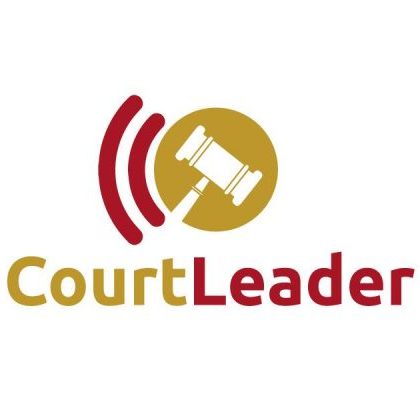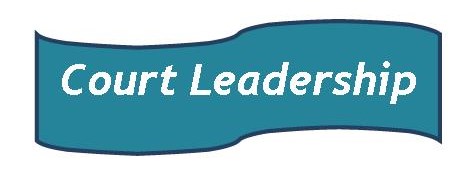A recent posting www.courtleader.net was on workforce management.[i] Sizable amounts of court budgets are for the people who make up the workforce (estimated to be anywhere from 70-90% of a typical court budget). Coaching techniques can help make the most of the human resources or workforce that are part of any court organization.
Court leaders interact and communicate with others through various roles: a) as communicators–convening conversations, encouraging involvement, listening, and responding – or b) as motivators– inspiring others, supporting individuals and teams, and connecting with others, or c) as collaborators–building consensus, leveraging organizational dynamics, and establishing relationships. [ii]
This is where coaching can have a benefit. A coach is someone who trains, teaches, instructs, or prompts others. A coach can also counsel, guide, lead, tutor, or direct strategy. Coaching allows leaders to connect, solicit ideas, build capacity, listen, challenge mindsets, problem-solve, develop others, and get thoughts “out of a rut.” As one source noted, coaching is less of command and control and more of support and guidance.
“Coaching is the art of asking questions.”[iii]
Coaching (or executive or professional coaching) involves communication for problem-solving capacity. It uses a positive and enabling process, a discussion. Publications use the following descriptors about coaching:
| Conversations Creativity Curiosity Supportive Teasing out information Questions instead of answers Rapport | Connection Engagement Problem-solving Insight sparking Acknowledging Observing Diagnosis |
Harvard Business Review published an article entitled “The Leader as Coach,” in late 2019.[iv] The authors urged that successful managers provide support and guidance rather than instruction. “Coaching 101” steps were noted as:
- Assess the situation. Determine the kind of interaction needed – whether directing others what to do, or non-directive exchanges.
- Listen. Close the mouth and open the ears.
- Ask open-ended questions. Avoid yes-no questions that shut down thinking.
- Apply non-directive coaching. Build skill and practice. You will know you are getting good when others react with “ah-ha!” – even though you may think you didn’t tell them anything or impart any ground breaking content.
Court leaders are ideally positioned to use coaching techniques. Coaching practices may result in better communication, interaction, and information sharing:
- About the mission and role of the court,
- Concerning organizational operations and changes,
- Surrounding job roles and performance expectations,
- With potential and current employees during recruitment, selection, and performance evaluations, and
- Among staff and management regarding employee relations issues.
Some years back, I had the privilege of attending a coaching course. I was taken by the use of what my instructor called “powerful questions.” Powerful questions are nothing more than good open-ended inquiries that probe for more information or additional insights on the issue. These powerful questions often cause those we are interacting with to have an “ah hah” moment where they think – “that IS a good question,” or “I should THINK about that.”
Here is a sampling of some of those powerful questions.
- What is your assessment of the impact of this?
- How do you feel about it?
- What do you make of it?
- What other angles can you think of?
- What seems to be the main obstacle to…?
- What might happen if…?
- What if you did…?
- Can you say more?
- If your life depended on taking action, what would you do?
- If you could do it over again, what would you do differently?
- What would you think about this in five years?
- In the bigger scheme of things how important is this?
I have used powerful questions as part of my preparation for consulting assignments and presentations. I have a favorite list of open-ended questions (four pages worth). I carry it with me (it is getting very dog-eared). I refer to it before engagements as a reminder of good open-ended queries to pose to participants for new insights on the chosen topic.
I’ve also used a questioning and problem-solving process which I’ve called the GROW technique. GROW has been explained in several publications.[v] It is a variation on the practice of asking open-ended questions. Here it is:
G: Stands for goal. Ask: What do you want to do? Why is it important?
R: Stands for reality. Ask: What is the current situation or reality that you are facing? Describe it and think about it.
O: Stands for options. Ask: What options or possibilities can you consider or investigate? What prospects can you create?
W: Stands for the way forward or the will to act. Ask: What steps can you initiate or take? What actions will you begin? What timelines or deadlines will you have?
Each time I have employed coaching techniques, I think they contributed to improved communication with the workforce. Funny thing is that in my earlier court administration days, a colleague teased me for asking so many questions. Perhaps my prior habit of using inquiry has been reinforced by my use of powerful questions!
Can we apply powerful questions in our regular workforce interactions? My guess is yes. Coaching can help us be better listeners and connect with others. Our leadership tool-kit should have powerful questions in it. As one author noted:
“[through coaching] The ability to raise the performance of your staff and seek long-term goals for them to work toward is an important element of being a good manager.”[vi]
Here are Some Sources on Coaching
- You Already Know How to be Great, Alan Fine
- The Heart of Coaching, Thomas G. Crane
- The Master Coach, Leading with Character, Building Connections, and Engaging in Extraordinary Conversations, Gregg Thompson
- The Coaching Habit, Say Less, Ask More and Change the Way You Lead Forever, Michael Bungay Stanier
- Power Questions, Build Relationships, Win New Business, and Influence Others, Andrew Sobel and Jerold Panas
- Good Leaders ask Great Questions, John C. Maxwell
- Yes, And, Kelly Leonard and Tom Yorton
- Essential Managers Coaching Successfully, John Eaton and Roy Johnson
- “The Leader as Coach,” Herminia Ibarra and Anne Scoular, Harvard Business Review, November-December 2019
- “Coaching Skills Every Leader Should Master,” Forbes Coaches Council, www.forbes.com , May 2016
- “Does a Leader Really Have to be a Coach,” Adam Gale, www.managementtoday.co.uk, March 2017
- “Impactful Leadership, Why All Managers Should be Coaches,” Vanessa Shaw, www.forbes.com , August 2017
[i] See https://courtleader.net/2020/10/20/court-leadership-the-competency-of-workforce-management/
[ii] See the National Association for Court Management (NACM) Core® on Leadership at https://nacmnet.org/who-we-are/initiatives/core-competencies/ and prior postings on www.courtleader.net https://courtleader.net/2020/07/13/the-various-roles-of-court-leadership/ and https://courtleader.net/2020/05/19/court-leadership-the-competency-of-leadership/
[iii] Adam Gale, “Does a Leader Really Have to be a Coach?,” Management Today, Championing British Business, March 27, 2017, www.managementtoday.co.uk/does-leader-really-coach/leadership-lessons/article/1428708
[iv] Herminia Ibarra and Anne Scoular, “The Leader as Coach,” Harvard Business Review, November – December 2019.
[v] See Heidi Grant, “Get Your Team to do What it Says It’s Going to Do,” Harvard Business Review, May 2014 and Harvard Business Review, On Point, Summer 2018, Herminia Ibarra and Anna Scoular “The Leader as Coach,” Harvard Business Review, Nov-Dec 2019, and, Alan Fine, You Already know How to be Great, 2011.
[vi]John Eaton and Roy Johnson, Essential Managers Coaching Successfully, DK Publishing, 2001.

